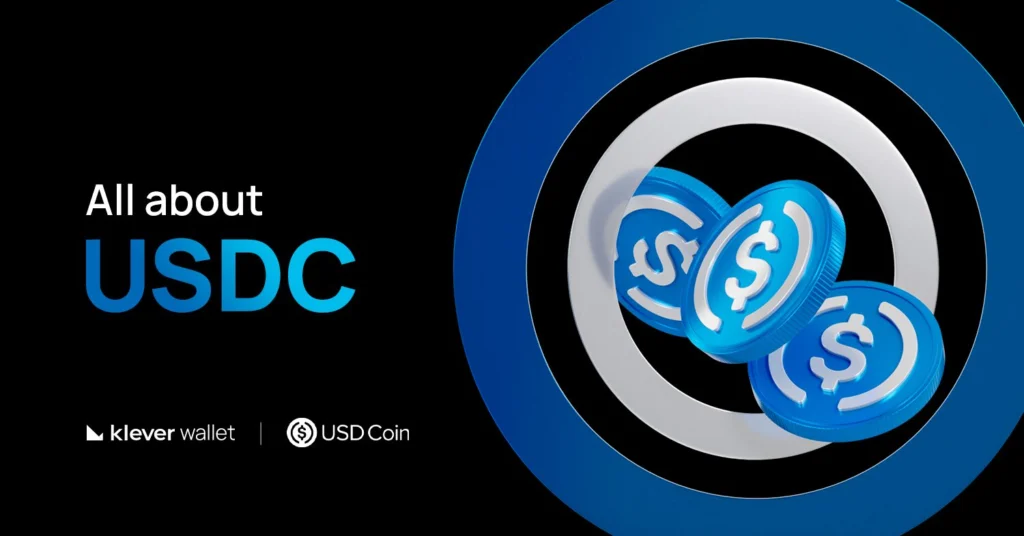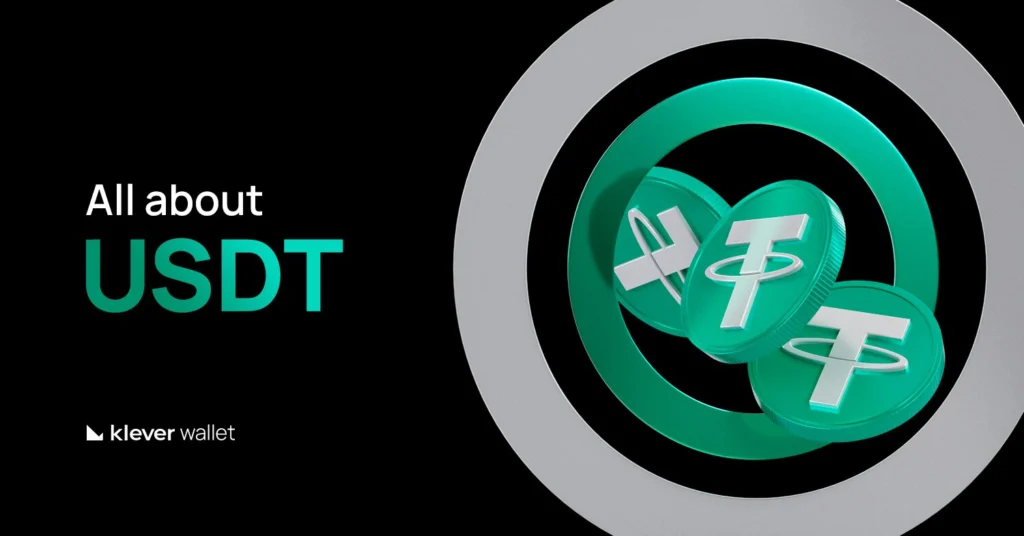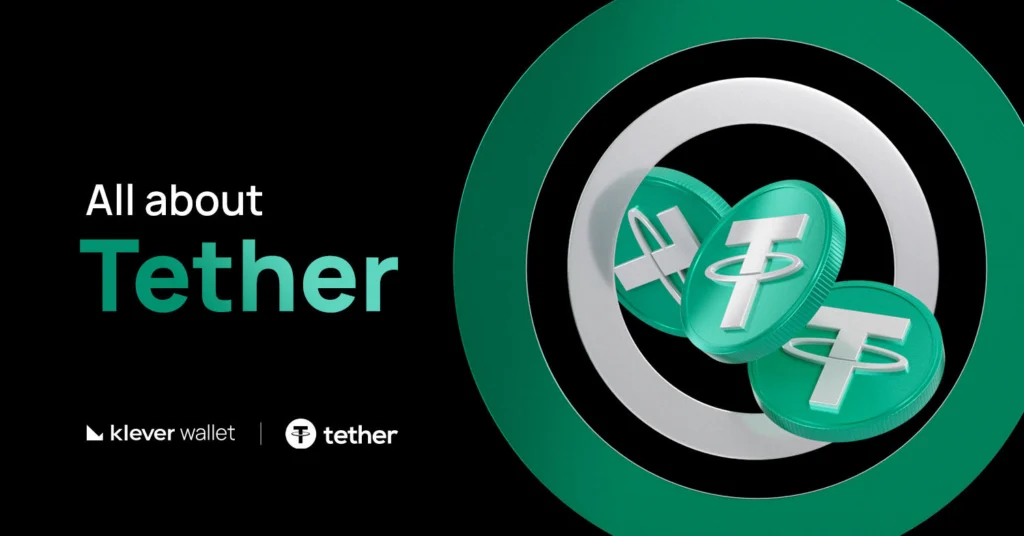
Main Informations About USDC
|
Field |
Information |
|
Token Name |
USD Coin |
|
Ticker |
USDC |
|
Category |
Dollar-backed stablecoin (1:1 with USD) |
|
Founders |
Circle (Jeremy Allaire and Sean Neville); originally in partnership with Coinbase (CENTRE Consortium, dissolved in 2023) |
|
Blockchain |
Issued natively on 24 blockchains, including Ethereum, Solana, Base, Arbitrum, Optimism, Polygon, Avalanche, Stellar, Sui, Aptos, NEAR, Noble (Cosmos) |
|
Consensus |
Depends on the underlying blockchain (e.g., Ethereum = Proof of Stake; Solana = Proof of History + PoS) |
|
Launch Date |
September 2018 |
|
Explorer |
Varies by network. Example: Etherscan for Ethereum; Solscan for Solana; full list available on Circle’s official website |
|
Circulating Supply |
~US$ 67.5 billion (August/2025) |
What is USDC?
USDC (USD Coin) is a dollar-backed stablecoin issued by Circle, meaning each USDC equals $1.
This peg is maintained through reserves fully backed by cash and ultra-short-term U.S. Treasury bonds, considered the safest and most liquid assets in financial markets.
Key Differentiators:
- Independent monthly attestations by Deloitte confirm the match between circulating tokens and reserves.
- Reserves are primarily held in the Circle Reserve Fund (CRF), a SEC-regulated fund managed by BlackRock and custodied at BNY Mellon.
- Increasing regulatory recognition, including an electronic money institution (EMI) license in France, within the scope of the EU’s MiCA framework.
Why Was USDC Created?
Circle launched USDC in 2018 to provide a reliable and regulated digital dollar for payments, transfers, and use in DeFi applications.
- Address the lack of transparency found in competing stablecoins.
- Enable instant settlements on exchanges and financial protocols.
- Comply with new regulations, such as the MiCA framework in the European Union, which already recognizes USDC as licensed electronic money.
How Does USDC Work?
The USDC mechanism was designed to be simple, transparent, and reliable.
- Minting (Issuance): When a business or verified user deposits U.S. dollars (USD) with Circle, the same amount of USDC is created directly on the chosen blockchain. This ensures every token issued is backed by real dollars or equivalent assets.
- Redeeming: The reverse process is also possible. By returning USDC tokens to Circle, the user receives the equivalent amount in dollars into their registered bank account. This mint-and-redeem cycle is what keeps the stable 1:1 peg.
- Multichain: Today, USDC is issued natively on 24 blockchains, including Ethereum, Solana, Base, Polygon, Arbitrum, Avalanche, Stellar, Sui, Aptos, NEAR, and Cosmos (via Noble). This expands accessibility and allows the token to be used across diverse ecosystems—from high-throughput networks to low-cost solutions.
- CCTP (Cross-Chain Transfer Protocol): To eliminate the risks of “wrapped tokens” (like the former USDC.e), Circle developed the CCTP. This protocol burns USDC on the source chain and automatically issues the same amount on the destination chain. That way, users move USDC natively and securely, without relying on third-party bridges—an important advancement for trust and liquidity.
Real-World Use Cases of USDC
USDC has moved beyond being just a digital alternative to the dollar and is now used across both digital and traditional sectors of the economy:
Global Payments
Companies like Visa already use USDC on blockchains such as Ethereum and Solana to settle transactions with international acquirers like Worldpay and Nuvei. This enables major financial players to move digital dollars in real time, without relying on slow and costly banking systems.
International Transfers
With USDC, anyone can send or receive digital dollars 24/7—including weekends and holidays—at a fraction of the cost of traditional bank transfers or money remittance services.
DeFi (Decentralized Finance)
USDC is one of the main stablecoins used as collateral for loans, as a liquidity base on decentralized exchanges (DEXs), and as a trading asset in on-chain derivatives markets. Its stability makes it one of the cornerstones of the DeFi ecosystem.
E-Commerce
Online stores, marketplaces, and fintechs already accept USDC payments, giving customers a way to pay with stable digital dollars—without dealing with complex currency conversions or the volatility of other cryptocurrencies.
Native USDC vs. USDC.e (Bridged)
Not all USDC circulating on blockchains is the same. It’s essential to distinguish between native USDC and USDC.e (bridged):
Native USDC
- Issued directly by Circle on the given blockchain.
- Backed 1:1 with U.S. dollars, with guaranteed redemption.
- Example: USDC on Ethereum, Solana, Base, Avalanche (since 2023).
- Has official Circle support, audits, and guaranteed liquidity.
USDC.e (Bridged)
- A “wrapped” version of USDC, created by third-party bridges.
- The process: USDC is locked on one network (e.g., Ethereum) → the bridge issues a “mirror token” on another network (e.g., Avalanche), called USDC.e.
- The risk: security depends on the bridge. If the bridge is compromised or attacked, bridged tokens may lose value.
- Not officially issued by Circle.
Why Prioritize Native USDC?
- Reliability: Backed and custodied by Circle with audited reserves, no intermediaries.
- Guaranteed Redemption: Only native USDC can be directly redeemed for USD.
- Lower Risk: Eliminates bridge vulnerabilities—one of the biggest security weaknesses in crypto (many of the largest hacks originated from bridges).
- Institutional Support: Exchanges, DeFi protocols, and payment companies prioritize native USDC in their integrations.
Is USDC Safe in 2025?
Security Points
- Reserves audited monthly by Deloitte.
- Custody held in the Circle Reserve Fund (USDXX), managed by BlackRock and overseen by the SEC.
- Positive rating from S&P Global regarding the quality of its assets.
- Regulatory recognition in the European Union under MiCA.
Risks and Points of Attention
- History: In March 2023, the collapse of Silicon Valley Bank exposed USDC’s vulnerabilities: about $3.3 billion of reserves were held at the bank, causing the stablecoin to drop to around $0.88. The peg was only restored after the U.S. government guaranteed that all deposits would be honored. This episode highlighted how events in the traditional banking system can still impact stablecoins.
- Compliance: To meet legal requirements, Circle can freeze wallets and block transactions linked to crimes, international sanctions, or investigations. This power has already been exercised in cases involving OFAC sanctions and hacker attacks. While this increases regulatory security, it raises debates about centralization and financial freedom.
- Supported Networks: In 2024, Circle announced the gradual phase-out of USDC on the TRON network, completed in 2025. The decision was justified by risk management and regulatory compliance, underscoring that USDC’s presence on a blockchain is not permanent and can be reassessed based on security criteria.
USDC is considered one of the safest and most transparent stablecoins in the market, especially for those seeking regulatory compliance and integration with the traditional financial system.
Governance and Compliance
USDC is not fully decentralized. Its governance is centralized by Circle, which holds the technical and legal authority to ensure regulatory compliance. These mechanisms provide security but also spark debates about the balance between control and financial freedom.
Issuance and Redemption Control
Only Circle can mint or burn USDC. This keeps the circulating supply always aligned with the dollar reserves.
Restricted Redemption (Whitelist)
Direct redemption into U.S. dollars is available only to verified Circle clients (businesses with a “Circle Mint” contract).
Retail users must rely on intermediaries such as Coinbase, Binance, or Kraken, which have integrations with Circle.
Freeze and Blacklist
USDC smart contracts, such as FiatTokenV2_1, allow Circle to freeze or wipe tokens from addresses linked to crimes, money laundering, or sanctions (e.g., OFAC).
This feature has already been used in cases of hacks and ransomware. While it reinforces compliance, it raises discussions about centralization vs. user sovereignty.
Regulation
Circle positions itself as the most regulated stablecoin issuer in the industry:
- United States
Registered as a Money Services Business (MSB) with FinCEN, following AML and KYC rules for direct clients. - European Union (EU)
In 2024, Circle obtained an Electronic Money Institution (EMI) license in France, already compliant with the MiCA (Markets in Crypto-Assets) framework.
Additional rule: 60% of USDC reserves issued under MiCA must remain in bank accounts, providing stronger consumer protection. - Other Countries
Circle is in active discussions with global regulators to expand the legal recognition of USDC, strengthening its role as the “official” stablecoin for digital payments.
Issuer Economics
Although USDC is free for end users (no minting or redemption fee on the token itself), Circle operates on a highly profitable business model:
- Earnings on Reserves
The money backing USDC (cash + T-bills + repos) generates daily interest. These earnings go to Circle (and partners such as Coinbase), not to USDC holders. This is the company’s main source of revenue. - Quasi-Banking Model
In practice, Circle functions much like a digital bank: it collects deposits (USD in exchange for USDC), holds reserves in liquid assets, profits from the interest, and provides global-scale liquidity. - Partnership with Coinbase
Despite the dissolution of the CENTRE Consortium in 2023, Coinbase remains a strategic partner of Circle and receives a share of the revenue from reserve yields.
This model gives Circle an edge over competitors like USDT (Tether), which operates with less transparent governance.
USDC Tokenomics
1. Overview
- Token Symbol: USDC
- Blockchain(s): Primarily Ethereum (ERC‑20), but also supports others via bridging mechanisms.
- Utility: Functions as a digital dollar for payments, trading, and DeFi, offering minimal volatility and high liquidity.
2. Allocation and Supply
- Total Supply: Around 68 billion USDC
- Circulating Supply: Approximately 67.5 to 68 billion USDC.
- Supply Allocation: Tokens are minted or redeemed by Circle in response to demand. There’s no fixed allocation to team or investors—USDC is backed fully by reserves maintained by Circle.
3. Utility and Rewards
- In‑Blockchain Use: Widely leveraged across exchanges, payment services, and DeFi platforms for stable and efficient value transfer.
- Staking: USDC itself isn’t used for staking, though holders may earn yield through lending or interest-bearing DeFi services.
- Governance: No governance rights are tied to USDC—Circle retains centralized control.
4. Economic Model
- Deflationary Mechanisms: None. USDC’s supply expands or contracts in line with minting or redemptions.
- Reward Distribution: USDC doesn’t distribute rewards directly; any earnings come from external platforms that support lending or interest generation.
5. Market Performance (as of August 23, 2025)
Based on latest data:
- Current Price: ~$0.9998 to ~$1.00
- Market Cap: ~$67.5 billion
- Circulating Supply: ~67–55 billion USDC
- 24h Trading Volume: Between ~$21 billion and ~$23 billion
- All‑Time High: Around $1.17
- All‑Time Low: Precise historical low wasn’t located; stablecoins typically stay close to $1.00. No official ATL widely reported.
For real-time tracking of price and market data, platforms like CoinMarketCap and CoinGecko provide updated metrics on USDC’s price, trading volume, and historical performance.
For a quick market overview, use Coin360 to instantly see whether USDC is gaining or losing value compared to other cryptocurrencies.
How to Store USDC Safely with Klever Wallet
USDC is no longer just a stablecoin—it has become one of the main pillars of the digital economy. Transparency, solid dollar backing, independent audits, and global adoption make USD Coin a benchmark in digital payments, DeFi, international remittances, and e-commerce.
But just as important as choosing the right token is storing it in the right place. After all, when it comes to stablecoins, security and convenience go hand in hand.
With Klever Wallet, you can hold, send, and use USDC with full self-custody—without giving up simplicity. It’s a secure, multichain wallet built for those who truly value financial freedom.
Download Klever Wallet today and put the power of USDC in your hands with safety and convenience.
FAQ USDC
-
What is USDC (USD Coin)?
USDC is a regulated stablecoin backed by U.S. dollars and short-term U.S. Treasuries. Launched in 2018 by Circle and supported by Coinbase, it maintains a 1:1 value with the dollar, making it one of the safest and most transparent stablecoins in the market.
2. How does USDC maintain its value?
Each USDC is backed by cash reserves or U.S. Treasury bills. Independent accounting firms publish monthly attestations to prove that reserves equal the supply in circulation. This transparency has made USDC a trusted choice for crypto investors.
3. Why do investors use USDC?
According to global users and discussions on platforms like Reddit, investors use USDC because:
- It works as a safe haven during crypto volatility.
- It enables yield opportunities in DeFi (staking, lending, liquidity pools).
- It provides a stable trading pair on both centralized and decentralized exchanges.
- It is widely accepted for cross-border payments and remittances, especially in LATAM, Africa, and Asia.
4. On which blockchains is USDC available?
In 2024, USDC exists natively on 24 blockchains, including:
Ethereum, Solana, Base, Polygon, Arbitrum, Avalanche, Stellar, Aptos, Sui, and Cosmos (via Noble).
Its multi-chain availability makes it one of the most versatile stablecoins for DeFi applications and cross-chain transfers.
5. What is the CCTP (Cross-Chain Transfer Protocol)?
CCTP is Circle’s solution for safe cross-chain USDC transfers. Instead of relying on risky third-party bridges, USDC is burned on one blockchain and minted on another. This reduces risks and improves interoperability across DeFi ecosystems.
6. Can you earn rewards or interest with USDC?
Yes. Platforms like Coinbase and some DeFi protocols allow users to earn up to 4–6% APY by lending or staking USDC.
⚠️ However, unlike traditional bank accounts, USDC is not FDIC-insured, meaning funds are exposed to crypto market risks.
7. What are the risks of holding USDC?
While considered one of the safest stablecoins, USDC still carries risks:
- Banking exposure: Circle relies on U.S. banks for reserves (in 2023, the Silicon Valley Bank collapse caused temporary depegging).
- No FDIC insurance: USDC is not government-backed like traditional deposits.
- Platform dependency: Holding USDC in centralized exchanges like Coinbase introduces counterparty risk.
Best practice: use hardware wallets or self-custody apps like Klever Wallet to secure your USDC.
8. How big is USDC’s market share in 2024?
- Market capitalization: around $34–35 billion (Aug 2024).
- It is the second-largest stablecoin after USDT.
- USDC dominates regulated markets, institutional finance, and on-chain payments, while USDT leads in trading volume.
9. Why is USDC important for global crypto adoption?
- Provides stability for traders and investors.
- Acts as a bridge between traditional finance and DeFi.
- Enables faster, cheaper remittances worldwide.
- Offers compliance and transparency, making it attractive for institutions.
10. Is USDC better than USDT?
- USDC strength: regulatory compliance, transparency, U.S. oversight.
- USDT strength: higher global liquidity and trading dominance.
- Investors often hold both, but USDC is preferred by those seeking security and transparency.




